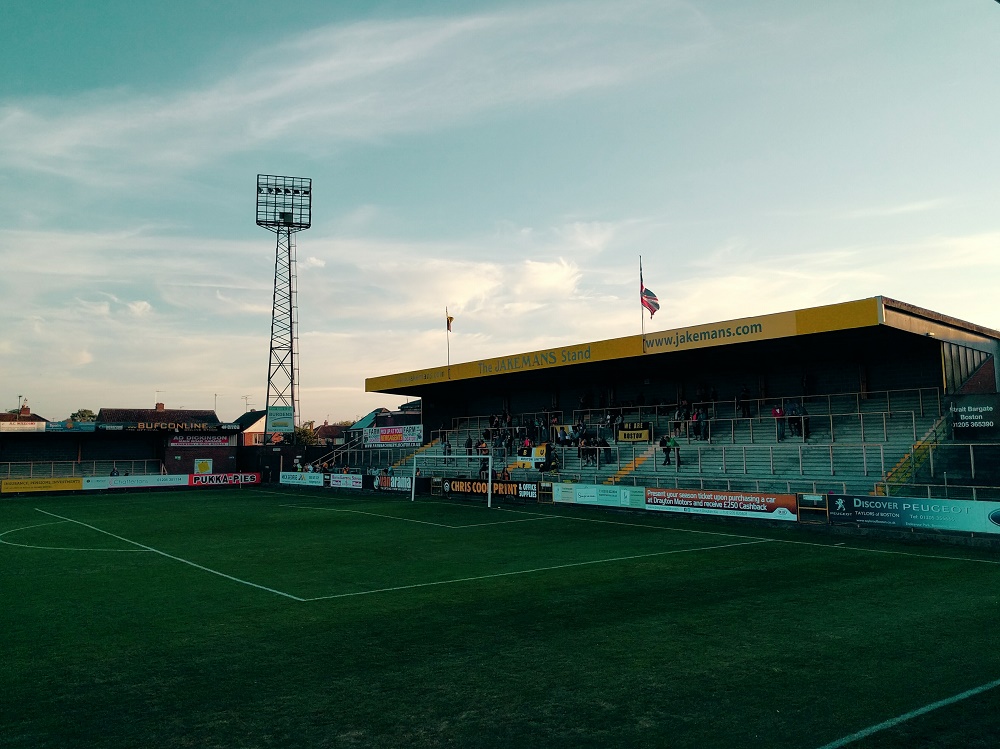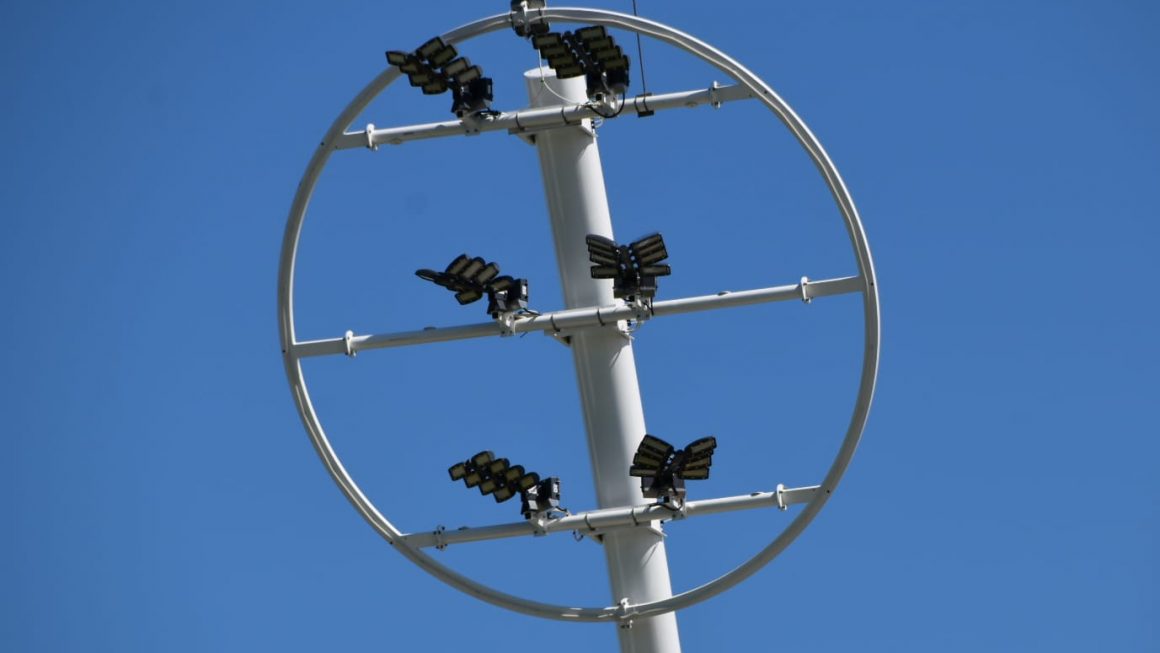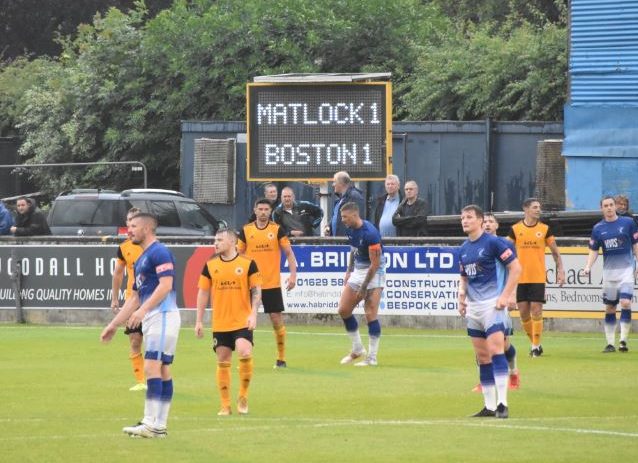Back in April, his voice on the verge of cracking, Boston United chairman David Newton gripped the microphone, stared back at supporters gathered in the club’s Pilgrim Lounge and reiterated his determination to deliver them a new stadium.
“Please be patient,” he said. “We’re doing our best to build an £11.5 million stadium for the club out of thin air.”
His emotion was understandable. After all, along with right-hand man Neil Kempster, the chairman has spent the last twelve years of his life trying to stabilise the finances of a club he acquired in a state of disarray at the same time as building it a brand new multi-million pound facility.
With the club owning no real assets, it has proved to be a lengthy and complex process, fraught with risk.
But Boston are now out of time and options. When Chester FC visit York Street this Saturday, it will be to open one final season at a storied old ground some older fans still refer to as Shoddy’s Lane.
Once regarded as the finest in non-league football, Boston’s ground is still an impressive facility for a club in the National League North, but its time is now coming to an end. This time next year it will have hosted its last game and will lie empty, awaiting a still-unknown fate
With the club restarting construction in Wyberton this week, the club’s new home, which so far has only existed as PDFs on a planning website, is now something you can see and touch. For United supporters, the reality of life after York Street is only now starting to sink in.
But what is it like to say goodbye to the old place, somewhere you’ve spent so many years? How does it feel to be leaving somewhere you have come to think of as home, knowing you’ll never return?
Arsenal fan James Smither knows that feeling.
When the Gunners played their final game at Highbury against Wigan on a sunny Sunday in 2006, James was there trying to process a series of different feelings, some uniquely personal.
“My primary emotion was sadness,” he recalls. “I started going to games as a ten-year-old with my grandfather and most of my most profound memories of the stadium were tied up with him. When Highbury closed, it removed a very tangible and emotional connection to him.”
The game, a 4-2 win for the home side, passed by in a blur, bookended by commemorations arranged by the club.
“At halftime,” James says, “the marching band that used to provide entertainment was brought back for one final performance. After the final whistle, in addition to the usual lap of honour by the players, there was a parade of club legends before a final countdown on the Clock End timepiece showed us our time at Highbury was at an end.”
And that was that.
For many fans, Highbury’s closure represented the end of a sense of community too. Like York Street, which sits nestled amongst quiet residential streets just east of the town centre, Arsenal’s ground felt part of the urban fabric and the people who lived there.
“It was an incredibly special place,” James says. “You could feel the club’s history in the walls. The magical way it slotted into the narrow streets of terraced housing in Islington was redolent of a bygone era before big money forever changed the game – and my personal connection to my grandfather multiplied that further.”
These are links that some Boston fans will lose too: a place shared with dads, mums, husbands, wives, daughters and sons. The sense of place that grounds those old experiences will soon be gone forever, though the memories will remain.
Conscious of that fact, James arrived determined to make the most of the day.
“I turned up ridiculously early just to walk around and around outside the stadium,” he recalls. “I wanted to soak up the memories and atmosphere and take photos of every single angle and aspect of the edifice.”
Like many supporters, he was pragmatic about the need for a move. Highbury was undoubtedly out-of-date: its scope for expansion was limited, and its corporate offerings were being squeezed by bigger, newer grounds – all reasons that also make Boston’s move necessary, albeit on a different scale.
But despite the advantages of the move to the Emirates, if you ask James if he’d jump in a time machine and return to the old place, he’s unequivocal.
“In a heartbeat,” he says. “I recognise that the new place will remain necessary for big games, but it would be fantastic just for a couple of games a season to play at Highbury again. It would make my heart sing.”
Of course, not all fans are so nostalgic for their old home.
Unlike Highbury, Cleveland’s giant Municipal Stadium had long outstayed its welcome.
The cavernous bowl was so huge that some claimed – inaccurately – that it had been built for an Olympics bid that never happened. Instead, the rat-infested bowl became an unloved symbol of the city’s decline. By the early 1990s it was in a poor state of repair. Everyone wanted out.
It was finally demolished in 1996 and its remains unceremoniously dumped in Lake Erie.
Indeed, ask Dave Swann, a baseball fan from North Royalton, whether he’d like to watch a game there now and he’s just as emphatic as James, but not in a good way.
“No,” he says, bluntly. “It was time to move on. There were games so cold, and so few people, that we were able to build a small fire in the outfield bleachers to keep warm.”
You might think the last game in such a hated stadium – one so cold you actually had to burn things to stay warm – might be cause for celebration. But even as Municipal Stadium staged its final baseball game – a 4-0 defeat to the Chicago White Sox – Dave still found himself unable to be completely happy.
“I had mixed emotions,” he admits. “I was happy that the team was moving to a new state-of-the-art complex, but also sad since I had many childhood memories at the old place.”
Glenn Bielik, another Municipal regular, concurs. “Most of the emotions that weekend were really mixed. I practically grew up at that stadium and still to this day remember my first game there, which was in July 1964, so there was sadness and nostalgia about leaving behind the old stadium. But there was also the excitement of knowing that next April we would be moving to the new shiny stadium up the street.”
Would Glenn go back?
“I wouldn’t even consider going back to the old place,” he says. “I will always have the memories from my youth, but I wouldn’t even think of it.”
These are the kind of jumbled, contrasting emotions Boston United fans are going to have to grapple with over the coming season. Some may be happy to be moving on; others will be distraught. Some people might be both.
There will be excitement, perhaps trepidation for what comes next, but also a real sense of sadness and a desire to say goodbye in everyone’s own way.
And it’s not just the bricks and mortar they will be saying farewell to. Stadiums are not like supermarkets or shopping centres. The bonds that connect friends and families across generations seem to seep into the steel and concrete and lend these buildings a far grander purpose.
They’re not just places we go to grumble about yet another cup defeat, but places we celebrate the past and the present, and the people we meet along the way.
Soon, though, the future will arrive.
In a little over eight months, one final whistle will blow and the terraces will fall silent for the last time.
But the ghosts will linger long after the bulldozers move in.
York Street will live on in memories, because just like Highbury and Municipal, old grounds never truly die.



